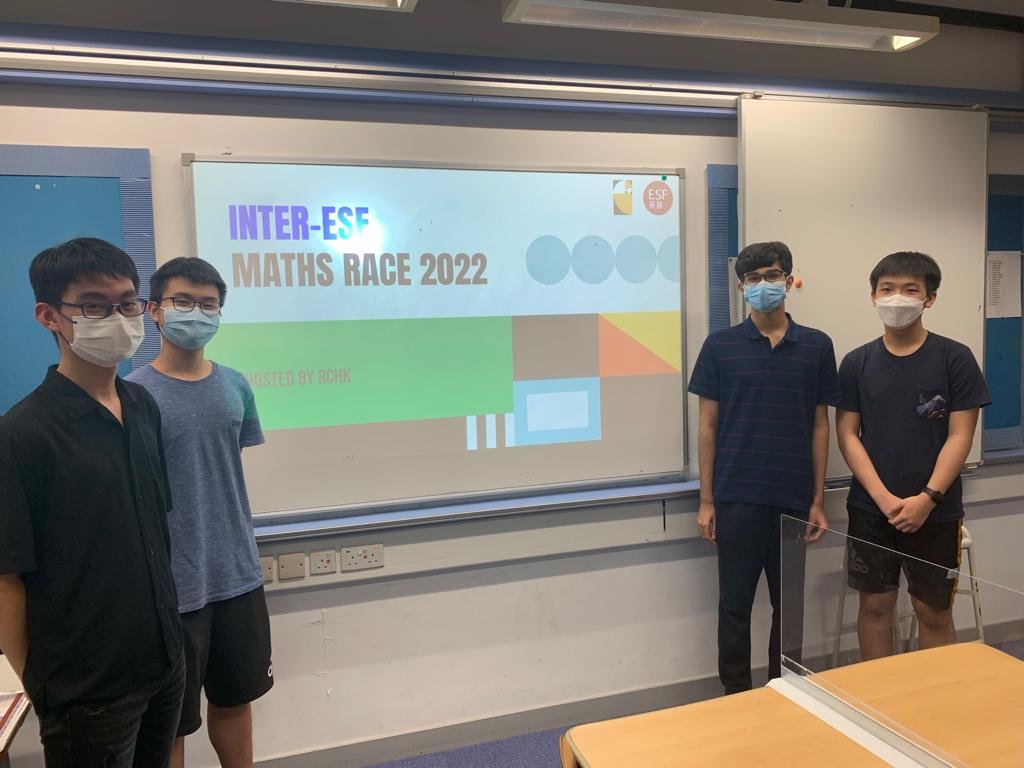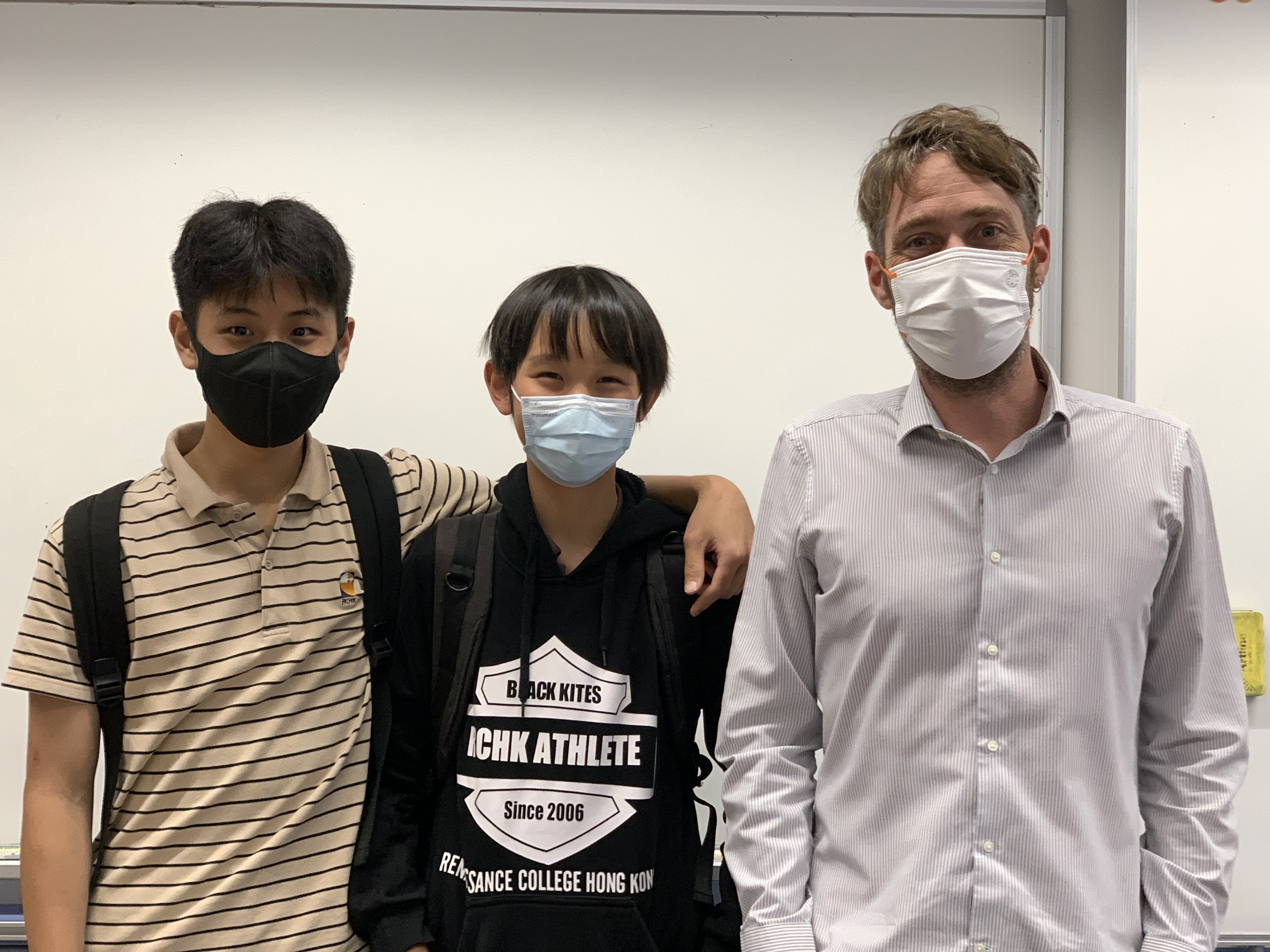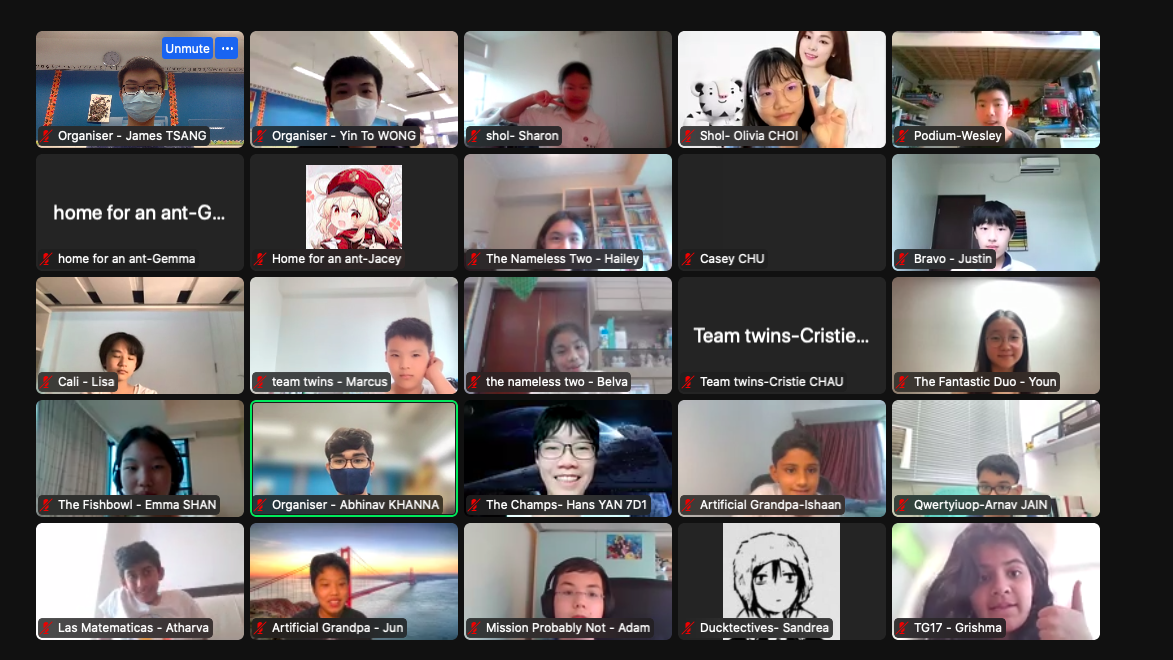Meritorious Inter-ESF Maths Race brings participants to brink of mathematical madness
By Anastasia Yu



The 6th Inter-ESF Maths Race was held on the 30th of April, 2022. Organised by Year 11 student Daniel Cheung and Year 12 students Abhinav Khanna, James Tsang, and Yin To Wong, the event took place online once again due to COVID-19 restrictions.
According to Tsang, the Maths Race was “designed to promote fun and enjoyment within mathematics regardless of your 'skill level'.” He also explained that this was why the questions weren’t typical “maths tests questions,” but rather “logic-based questions,” so that “everyone had a chance of getting them right.”
Students across various ESF schools competed against each other in groups of two, with approximately a hundred Year 7 to 8 students competing from 8am to 12pm, and eighty Year 9 to 10 students competing from 1pm to 5pm.
As participants waited for the volunteer briefing to end, many commented on each other’s creative and, often, humorous team names in the Zoom chatbox. A few standouts included “Lacey’s Children” ––– evidently named after the Head of Mathematics at RCHK, Matthew Lacey — and “Team Ian-Ian,” with both participants within the team named Ian.
The competition for Year 9 and 10 participants commenced at 2pm with an opening address from RCHK principal Harry Brown and maths teacher Shobha Sanker. The first round, “The Blitz,” then began, and each team joined their respective breakout rooms to complete as many of the thirty questions as possible within half an hour.
Year 10 student Fei Fei Wong found the questions of the first round “challenging” as she “wasn't really in the math mood” during the first round. Another Year 10 student, Carina Li found, some questions “quite time-consuming”.
After a 20 minute wait for other teams to complete the first round, the second round began. “The Logic Cruncher” consisted of numerous logic puzzles in various categories, including anagrams, algorithms and sequences, and Zebra (also known as Einstein’s Riddle) puzzles. For the Year 7 to 8 competition, this round was replaced by the “Visual Cruncher,” which consisted of memory puzzles, quick sums, and other problems. Participants worked in their respective teams to complete the questions within 30 minutes.
However, according to participants, the algorithm questions in the Logic Cruncher were quite complicated and difficult to understand. Wong stated, “the algorithm questions for the logic round are by far the most confusing puzzles I've ever seen!” Li had a similar response, saying the questions were “not particularly [challenging], but just confusing”.
Another participant, Joi Lam Chow from Year 10, said the questions were a mix of “emotional damage” and “not so damage.” Chow reasoned that although the algorithm questions were a “complete disaster” and had ambiguous instructions, the anagrams were “quite nice” as they got most of those questions right. Li and Wong further suggested that changing the wording of the questions would make them easier to understand, and making the questions more explicit would allow the participants to understand what needed to be answered or what the question was looking for.
The final round was a speed-based “Buzzer” event. Teams remained in the same breakout rooms as the previous rounds for the first half. Like all typical buzzer rounds, the team who pressed the “buzzer” first –– typing “b” in the chat –– got to answer. Each correct answer was worth one point, and after the first buzzer round, teams were placed against those who had achieved similar points in the previous round.
Wong found the buzzer round to be “very smooth, though quite challenging” as her team could not comprehend the question before her opponents did. Li said the buzzer round was the “most fun and interactive round of all.”
Finally, after the end of the buzzer round and a short break for the organisers to calculate the overall points, everyone returned for the awards ceremony. The overall winners of the event, as well as those for each round, were announced: Torres Chau, Suwhan Cho from Team ‘Lacey’s Children’ won in the overall Year 9 to 10 category, whilst Kal-El Chow and Gladys Chiu from Team ‘Milk’ won in the overall Year 7 to 8 category. Both winning teams were from RCHK and put on an exemplary performance throughout the competition.
How did the participants feel about the experience overall? Wong commented that the experience gave her “the opportunity to practice and be reminded of mathematical concepts” that she forgot, and had a great time competing against many “math geniuses.” Wong and Li both agreed that the waiting time between rounds could be shorter, as there were frequent technical difficulties and issues with regrouping participants throughout the event. Wong added that they could have used the time to “do something of interest” or even “speed up the math race so it ended earlier”.
In spite of all the technical difficulties and time spent waiting, all participants interviewed concluded that the 6th annual Inter-ESF Math Race was incredibly engaging, rewarding, and worthwhile, hoping for an in-person event next year.